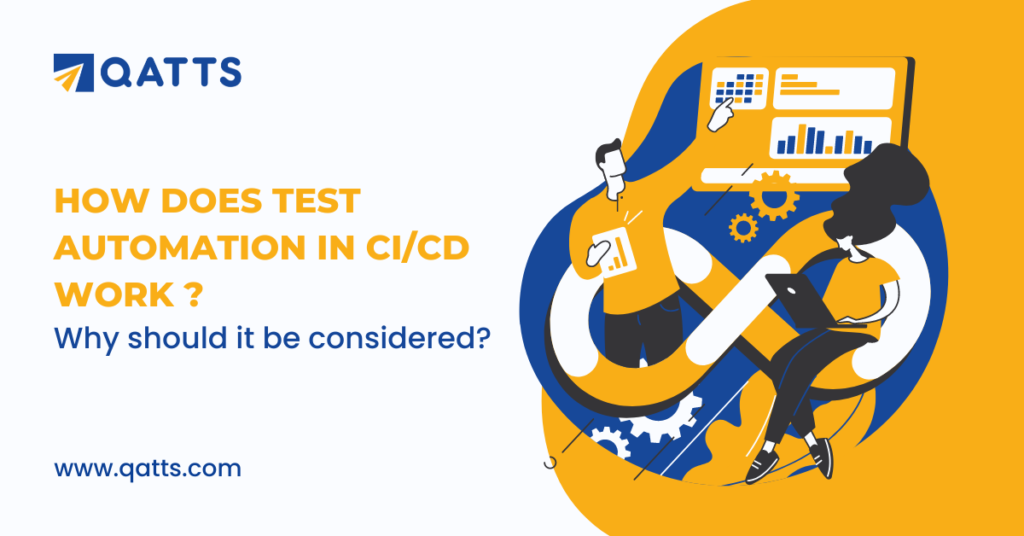
The Continuous Integration/Continuous Deliver (CI/CD) testing methodology came from the need to bridge the gaps between Developers, Testers and Operations, via DevOps. The CI CD process focuses on developers integrating their work continuously, which is then followed up by continuous tests from the testers, so that products and updates can be released more often by the operations team.
The main aim of automated CI CD testing is to enable the development teams to deliver working software to the users, through which useful feedback is received, in terms of what’s lacking in the product, and how it can be bettered.
Importance of CI/CD in automation testing
The importance for any kind of testing stems from the kind of benefits it produces, and the same is the case with automated CI/CD testing. While manual testing can also be opted for, automated CI/CD testing offers several benefits, which includes:
- Faster release cycles
New features can be gotten into production quicker, because the build and deploy cycle are sped up. This enables the test performers and the developers to understand where they’re lacking and where they can improve, when it comes to the look and feel of the final product. - Reduced risks
The main thing that anyone is scared of, when it comes to software development, is the many bugs that can possibly be created, and the same is the case with even CI CD test automation. With automation, however, the risk of bugs can be avoided to a great extent, as new updates and features can be released and integrated continuously. - Lower costs
Automated testing environment reduces the costs associated with maintaining test infrastructure, as parallel testing can be done, which drastically cuts down the number of machines needed to run the various tests necessary. Thus, less time is spent on fixing bugs as well. - Higher quality products
One of the biggest fears when it comes to automation testing is that the quality may be compromised for the speed of testing. However, this is something that needn’t be feared when it comes to CD CI, as the continuous integration of data and parallel tests ensure that all minor developments are tracked, which helps reduce bugs. - Better business advantage
Naturally, when the testing process of something is sped up, it means that a lot can be delivered in a short span of time. This obviously is a better business advantage, as one can collaborate and deliver more software products.
What types of testing can be done in CI/CD ?
A number of tests can be done as part of CI and CD automation. The following is a list of tests that can be considered to perform under CICD automation:
- Unit tests
Unit tests focus on ensuring whether or not your code at the base of the entire product works the way it is supposed to, meaning that the testing would begin right from the very base of the pyramid, making it possible for the perfect functioning of the entire product. Unit tests also function every element of your product keenly, unit to unit, making sure that there are as few bugs as possible. - Integration tests
Integration tests help the multiple parts of your software interact with each other, which helps you understand whether your software is then functioning the way it is supposed to. - End to end tests
As the very name suggests, end-to-end tests make sure that the software, or product, that you’re working on, is working exactly the way it is supposed to. Given that any small change in the code can affect these tests, it’s advisable to conduct these tests as part of CICD test automation, as any bugs could be easily identified. - Performance tests
Performance tests gauge the overall functioning and reliability of the product that you’ve been working on, for as long as you’ve been working on it. These tests help understand any bugs or shortcomings of the software you’ve been working on, further helping you improve the software based on what is required. - Test environments
While test environments may not be a test, they are nonetheless very important when it comes to testing. Automated CICD testing helps you build accurate test environments, and in a short period of time.
Why automate tests in CI/CD / Role of automation testing in CI/CD
The core of any CI/CD pipeline is automation testing, as it revolves around the concept of build fast, test fast, fail fast, which is the core of CI.CD as well.
The CI/CD process is greatly helped by automation as it enables meaningful and effective implementation of the entire process. This is because bugs can be reported as soon as they are detected, which then helps fix them as soon as possible:
Here are a few other reasons why CICD tests should be automated, or the role of automation testing in CI/CD
- Manual efforts are reduced greatly, which frees up time to perform more and more tests, and rigorously too.
- Give immediate feedback.
- Tests get more accurate, and more test cases are covered.
- Product consistency can be taken care of, as more tests can be generated and compared.
- Becomes an integral part of the CI/CD pipeline, abiding with its principle of build fast, fail fast.
QA in CI-CD pipeline.
Contrary to popular belief, QA automation in CICD can be a very easy and simple process if some general rules are followed. Here’s how the process can be made easier
- Choosing the right CI/CD tools for your projects.
- Documenting your CI/CD pipeline elements.
- Utilizing an effective testing workflow with test automation tools.
- Identifying the processes that can and should be automated.
- Identifying weak points that lead to crashes and update processes.
- Promoting collaboration between developers and testers.
While pipelines work for small projects, mid-size firms, and at scale, all that’s needed is the right approach when it comes to implementation, which then helps achieve improved performance, efficiency, ROIs, and reduced cost.
Challenges in implementing CI/CD
While the CICD test automation framework supports increased reliability, speed, communication, and more, it does encounter some problems if some basic rules are not followed.
The CICD pipeline is very susceptible to errors, which is why you should always give immediate attention to any sort of drawbacks in the implementation of Ci and CD.
The most common issue with CI/CDs automation is automated UI testing with selenium. CI/CD can exacerbate selenium test woes, such as false negatives on regressions and defects.
Here are some more challenges that can be encountered while implementing CI/CD:
- Unstable CI/CD pipelines
- Continuous delivery with continuous deployment working as one
- The right processes not being prioritized for automation
- Metrics and dashboards not being actionable
- Resource management regarding CI job frequency
- CI and CD coordination
- Using the wrong CICD tool for the wrong job
Conclusion
Test automation in CI/CD is a great option, as it not only speeds up the process, but also helps ease the entire process. Thus, while it may have its own set of challenges and drawback, following the right set of guidelines and rules, the entire thing is a lot more beneficial and has more pros than cons. QATTS enables ed CICD testing, while also being very helpful to the test performer while conducting tests.


